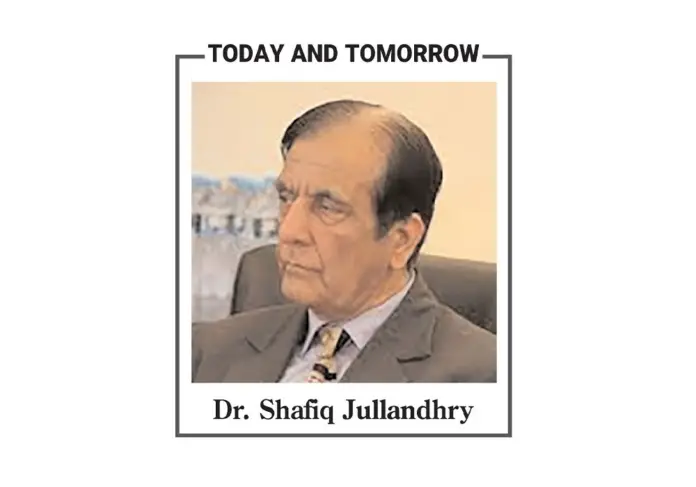We know that our material body also has something which is not material. Our five senses connect our inner self to the outer world. All information about our observations, experiences, feelings, readings, seeing, and listening stays in millions of our brain cells in form of electromagnetic waves. Our brain processes this information to help our day-to-day activities. This information is converted into ideas, beliefs, and attitudes. Psychologists tell us so much about parts of our brain, i.e., unconscious, subconscious, superconscious, and conscious. Our thinking process remains active and provides us with guidelines and solutions for directing our lives. In this way, our mind and body activities coordinate and combine to manifest our personality or individual identity. We know that our knowledge, thinking, and ideas are the foundation of our actions and deeds. Along with food and information as our inputs, we also desire so much else.
We hope for the engaging and friendly environment around us. We want beautiful and loyal company, acceptance, leisure, pleasure, rest, and recreation. But we know that we can’t stop our desires at any point. The soul that is considered the gist of our personality has strong connections with the world we came from. Sometimes, we encounter happenings that imply no scientific principles and fail to be explained by any logic. Such mysteries are considered the area of metaphysics, which labels many strange happenings as telepathy, and so much is defined as just ‘happening by chance’. But suppose one can recall all such minor and essential events of their life and ponder upon them. In that case, indeed, he will strongly feel that this limitless, unique, and fantastic universe is not established there without any purpose. This massive system of planets and their rotations within given circles, gravity, life, heat and light-transmitting suns, black holes, different categories of life on other planets, and a thousand times bigger planets than our earth without any life!
True that astronomy or space science is not our area, but the universe around our world has been a big question for us from the very beginning. Then there are mountains, oceans, rivers, plains, plateaus, forests, valleys, streams and roads, buses, trains and planes, and all modern means of living and traveling. How was this unimaginable universe planned, designed, and structured, what was the purpose, and who was behind it? The well-understood, clear, and easy answer is that Almighty God does it, and it is His will. Along with this whole universe and other living creatures, He is also the Creator of human beings, and we humans are the best creature of Him. He has bestowed us with the best opportunities and wants us to deal fairly with each other and try to understand the principles working behind everything in this universe. Get information, research, understand, and make proper and just use of everything.
I will write some unusual things that happened to me in my next column, but at this moment, I am shedding some light on systems. Theory people say that there are systems within systems and systems. The whole universe is a unique combination of techniques from the micro to the macro level. In an atom, electrons circle the nucleus. In the human body, some scraps together make cells and molecules. They become unique body systems, i.e. liver, heart, kidney, lungs, eyes, ears, throat, stomach, nerves, brain, etc. A human himself is a system of so many plans. Two-three dozens of students make a class. A furnished room with multimedia, a display screen, a writing board, and a teacher becomes a class system for a subject. The same students will take some other classes together and become part of an academic program. There are many semesters of an academic program system, and there are many academic programs in a university.
Schools, colleges, and universities together make an educational system of a country. Similarly, there are economic systems and their institutions, political systems and institutions, defense systems and institutions. All of these systems make a country’s system. There is a global system of the UN on this earth. Our planet earth is a part of the solar system, and this solar system is part of a galaxy. Scholars define a system as a combination of closely integrated components controlled by central regulatory units. Every system has an environment and inputs and outputs. If an element of a system stops working or has some defect, it affects the whole system. The central regulatory unit has control over the components but doesn’t have any control over the environment. If there is a change in the environment, the central regulatory unit can’t revert it. It has to adapt itself according to the difference in the background. This is all about the system. For scientific research or discussion, we need to adopt a systematic approach, which means that we need to look at things as a system along with their components, central regulatory unit, environment, inputs, and outputs.
For this, we can consider an example of a sugar mill. The CEO of the mill is its central regulatory unit. Its production unit, HR Department, Marketing Department, Purchase Department, and Finance Department are its components. This system’s input is sugar cane, and the output is sugar. Its environment is the community where the mill operates and the sugar cane growers work. Suppose we want to start a sugar mill in some area; we take this model of a system and work on the details in advance for our success. In other cases, this systems model will work well if we work out the details with the real sense of a systematic approach. This simple example is enough for understanding and using a successful systematic or scientific method. But we will need details of every component’s work, its nature of the cooperation with other components, the experience and qualifications of the components/departments’ heads and workers.






